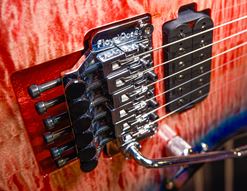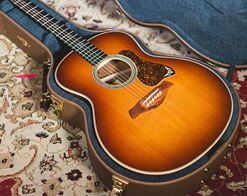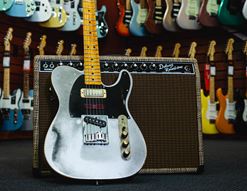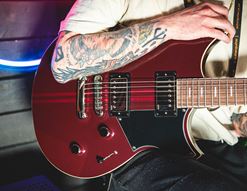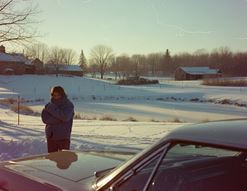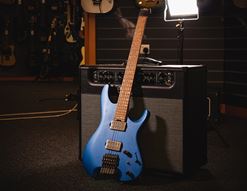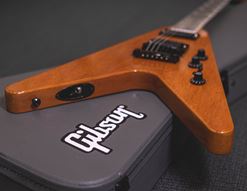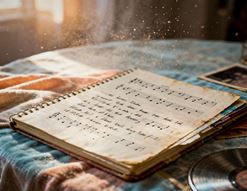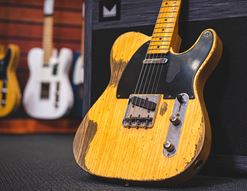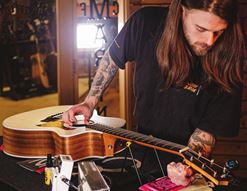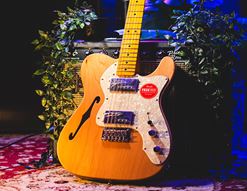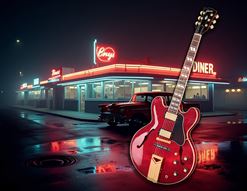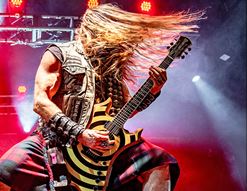Indie is the oft-unsung hero of the guitar world. It’s an intensely guitar-centric form of music, and it’s beloved by an enormously wide range of people, music obsessives and casual fans alike. But we guitarists don’t often make enough time for the indie guitar heroes out there. I wonder why that is? It’s not as if they’ve not innovated, inspired and contributed to our collective cause.
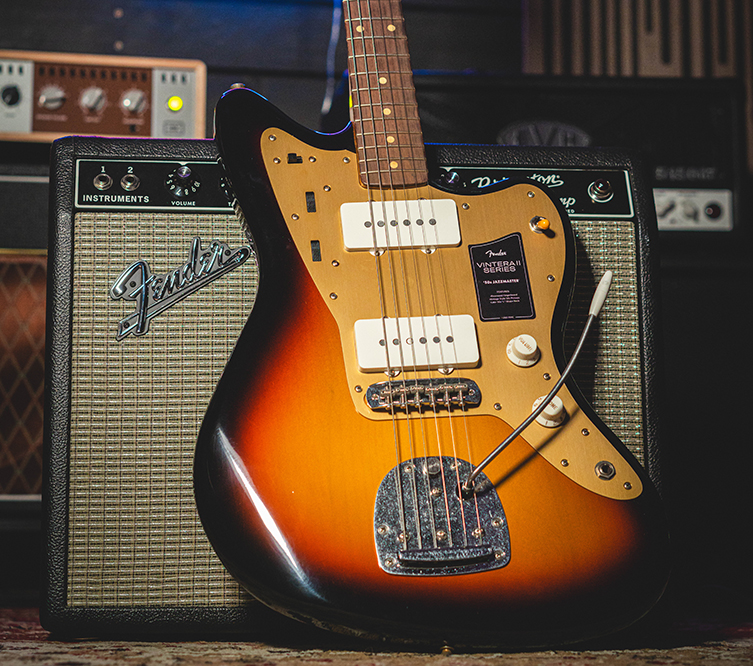
Perhaps it's because most of them are inherently team players who don’t actively seek the limelight in the way that rock, blues and metal guitarists naturally tend to do?
Could be. There’s also the issue of what ‘indie’ means, because that term can encompass some pretty diverse music! Pop can be indie, punk can be indie, and many cross-amalgamated gumbos of music can be called indie. UK indie is different from US indie, and then there’s everything outside of that!
Where to begin?
Probably with the most influential indie guitarist of them all…
14 Greatest Indie Guitarists at a Glance
Johnny Marr
The ex-Smiths legend is the definitive indie guitar hero. The music he and Morrissey created in the 1980s seems to be a body of work that will never age or become irrelevant. Marr is a great ‘parts’ player who knows what a song needs and how to fit it on with class. He’s also a relatively unpredictable musician, in his note choices, counter-rhythms, tones and even career choices: from The Smiths to Electronic to Modest Mouse to The Cribs and Hans Zimmer? Not exactly an obvious path, but an inspired one? Definitely!
Kevin Shields
Kevin Shields is one of those players whom you’ll either absolutely adore or simply not get at all. His work with My Bloody Valentine is enormously influential, as it took the Sonic Youth approach to offsets, tunings and fuzz into a whole new realm. Adding layers of ambience and developing his ‘glide guitar’ technique with his Jazzmaster’s whammy bar took his sound - and indeed whole approach to playing - into places that hadn’t been visited before. MBV invented shoegaze, obviously, but a great many players from other genres were also paying attention.
John McGeoch
If there’s one thing that post-punk indie rockers Siouxsie and the Banshees continually excelled in, it was in hiring amazing guitar players called John. John McKay, John Valentine Carruthers and Jon Klein all added their potent creativity to the tense melting pot that was the Banshees over the years. However, I don’t think anybody would disagree with me when I pick out Greenock boy John McGeoch as the greatest of them all.
Beloved by fellow musicians like Johnny Marr, John Frusciante, Peter Hook and Ed O’Brien, McGeoch’s angular arpeggios, deft application of flanger and artistic sense of melodic dissonance put him in a league of his own. He continued to innovate with John Lydon in PiL, but it’s the three records he made with the Banshees that stand tall as the best monuments to his art.
Robert Smith
You have to be a capable and interesting guitarist to be able to replace the great John McGeoch in Siouxsie and the Banshees. Doing that whilst also being the main man in The Cure borders on the ridiculous, but for a time that’s exactly what Robert Smith did. You can hear the McGeoch influence in Smith’s later playing for sure, but then you can hear Smith’s influence in everyone from Dave Navarro to the Deftones.
The Cure - the world’s biggest goth band that isn’t really a goth band - is obviously where everybody knows Robert Smith. His use of atmospherics is exemplary, and his echo & flanger guitar tone is the definitive mid-80s alternative sound. Somehow, it still sounds like it’s from slightly ahead of us in the future, even now. People who don’t rate Robert Smith as a great guitarist simply aren’t listening properly!
John Squire
To some music fans, The Stone Roses are demigods who float around on clouds. Whilst some do take it a bit far, I totally get it: there’s something extraordinarily special about their music - particularly their early stuff. Central to that is guitar maestro John Squire. Truly, Squire is the sort of old school guitar hero that even casual music fans get excited about: a kind of Johnny Marr player but with elements of Jimmy Page, mixed in with confidence and swagger. It’s quite a combination!
His cooler-than-cool guitar parts always serve to elevate the song, and he’s probably the most underrated wah pedal user in all of music! Later period Roses music maybe leaned a little too heavily into 1970s hard rock excess, but everything before then is pretty much sculpted out of gold.
Thurston Moore & Lee Ranaldo
Thurston Moore and Lee Ranaldo wrote the blueprint on how to deconstruct the sound of an electric guitar. With Sonic Youth, the pair of guitarists took unwanted pawn shop Jazzmasters, invented new tunings and shattered the notion of conventional playing. ‘Noise guitar’ wasn’t a new idea then, but it hadn’t been developed as specifically - or as thrillingly - as Sonic Youth played it.
Surprisingly, they didn’t use too much in the way of effects, either: it’s mostly unorthodox practical techniques at play here, from movable chord shapes to getting drum sticks involved! Their DIY approach to utilising what they had available in new ways is maybe as influential as the actual sounds they achieved.
Graham Coxon
Blur’s Graham Coxon is a really interesting and innovative player. He certainly came into his own with the band’s self-titled album with many moments that are just flat-out inspired: the use of delay in On Your Own is super cool, and the entire performance on Death of the Party is a masterclass in texture and effects use.
That said, I feel like he was always experimenting and searching for ways to further what was possible from his guitar. Sing, from Blur’s debut album Leisure, is a wonderfully impressionistic bit of playing, with a heavily effected, glittering, chimney guitar part that I always assumed had been reversed. I’m not so sure now, actually. Is it just excellent application of reverb and flanger? Give it a listen and see what you think!
Nick Zinner
Nick Zinner is one of those ultra-inventive guitarists who treats his corner of the band’s sound as a canvas for throwing sonic paint at. A total pedal freak, Zinner is an expert at creating light and shade, and at framing Karen O’s vocals with just the right angles and colours, as well as adding plenty of explosive energy and tension. The rough edges in his sound only add to the overall effect.
J Mascis
If there’s such a thing as an indie shredder, J Mascis is that. The Jazzmaster-toting Dinosaur Jr mainman has made a trademark from playing widdly solos at monumental volume, and I can’t think of a single thing wrong about that. He straddles that fine line of being defiantly alternative but also pretty traditional in a lot of ways. Not everyone can pull that trick off, but J Mascis is the example for all that it can be done, and with a real ‘go for it’ attitude.
Bernard Butler
Talk about interesting? Bernard Butler’s career has seen him become a celebrated producer and solo artist, but it’s still those first two Suede albums that have fans all starry-eyed. Butler created bespoke parts around Brett Anderson’s vocals that elevated the songs without intruding, and his sound was a perfect blend of atmosphere and attitude. Such a colourful and exciting player, and those records have aged extremely well.
Noel Gallagher
He’s currently the man of the minute, with a huge tour and a signature Gibson Les Paul out this year. The Oasis mastermind has always been a songwriter who plays lead, rather than a typical guitar hero, but that’s true of many indie players. Noel’s an all-rounder who loves his gear and loves making a big noise. His solos are the type that people sing along with at stadiums, and that sort of connection is what it’s really all about, isn’t it?
Joey Santiago
The Pixies practically wrote the rulebook for what became 90s alternative rock. As a late 80s college rock band, they had the indie credentials, the otherworldly songwriting and the manic energy that saw their star rise extraordinarily quickly.
Joey Santiago’s volcanic, violent guitar manglings sat directly next to some sublime surfy twangings, which made him an instantly recognisable player and a far more original one than his endless copycats.
Nels Cline
Nils Cline is the indie player that people love to namecheck. He’s the lead player in Wilco, a band who straddle almost all non-heavy guitar genres, and are almost as achingly tasteful as The National. Cline is an avowed Jazzmaster fanatic, and I see his main value as a musician in how versatile he is capable of being. Cline can be as high brow and jazz-inflected as you want, or as trashy and noise-ridden. Crucially, he has authority on his instrument in all of those directions, plus the points in between that connect them. An indie-rock Bill Frissell? I wouldn’t disagree!
James Dean Bradfield
James Dean Bradfield was a ‘proper’ guitarist during a period when it wasn't cool to have aspirations of greatness. His bold and inventive lead guitar playing turned Generation Terrorists - the Manic Street Preachers’ debut - into a thrilling and memorable ride through a post-Guns ‘n’ Roses, pre-Oasis rock landscape.
Since then, he’s constantly kept the quality levels high and managed to be both a top player and a strong vocalist. Fans of the band know how accomplished he is, but I get a feeling he’s still a little undervalued in the wider scheme of things. Listen to Slash and Burn, then check out If You Tolerate This Your Children Will Be Next to hear the man’s diverse approach to the instrument.
What is an Indie Guitarist?
So that’s my take on who the great Indie guitarists are. What did you make of that? In fact, what even makes a guitarist an ‘indie guitarist’? The genre has always been difficult to pigeonhole, partly because the term ‘indie’ came about more as a way of doing things than about how to sound.
I’d maybe say that it’s the song-based approach to guitar playing that makes a player ‘indie’. Hard rock guys, for example, will often chug away on muted power chords for most of the song and then get their 16 bars for a face-melting solo, whereas a good indie player like Johnny Marr or Nels Cline will carefully construct a tapestry of notes and tones around a song, and maybe not even play a solo at all! So, I’d say it’s the attitude and sensibility of the musician, more even than the music itself.
After all, Oasis are selling out stadiums, and Noel is playing traditional chords and solos, and yet he’s still an ‘indie rock’ guitarist, not a ‘stadium rock’ player like, say, Phil Collen from Def Leppard. James Dean Bradfield is more or less a heavy rock lead guitarist, but he’s an ‘indie rock’ player thanks to the context of his music and his own sensibility about how his guitar fits into that.
Do you agree? I’d be interested in hearing, because there is always a fine line, and there are always exceptions.
What’s clear, though, is that indie music is full of great guitar playing. And Jazzmasters.


